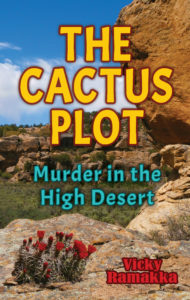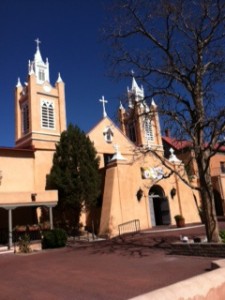Vicky Ramakka’s intriguing contemporary mystery novel, The Cactus Plot: Murder in the High Desert, takes place in northwest New Mexico.
Fresh from college, Millie Whitehall accepts a summer position as a biologist with the Bureau of Land Management (BLM). Millie’s job consists of plotting and categorizing high desert plant life in an area some consider barren wasteland. As Millie works in the field, she encounters some interesting characters: a cowboy supposedly looking for stray cattle, a German photographer, an oil rig worker, an eccentric environmentalist, and an Apache wildlife biologist.
Along the way, we learn the purpose and value of BLM land. The National Forest Service was awarded places rich with timber, the National Park Service the scenic areas, and BLM got the left-over land that nobody wanted. But now, BLM land is in high demand. The bureau is charged with managing public land for multiple use to include recreation, range, timber, minerals, watersheds, and the protection of historical and cultural areas. These facts set the stage with what would become a puzzling chain of events.
Two mysterious deaths occur that autopsies reveal involve plants. Millie is suddenly drawn into the murder investigations and it’s a race against time before she becomes the next victim. She learns that the people she has met aren’t necessarily what they first appeared to be.
The author vividly describes the high desert and its flowers, including rare cactus much sought after by poachers. The Cactus Plot is an intriguing mystery with an intricate plot.



